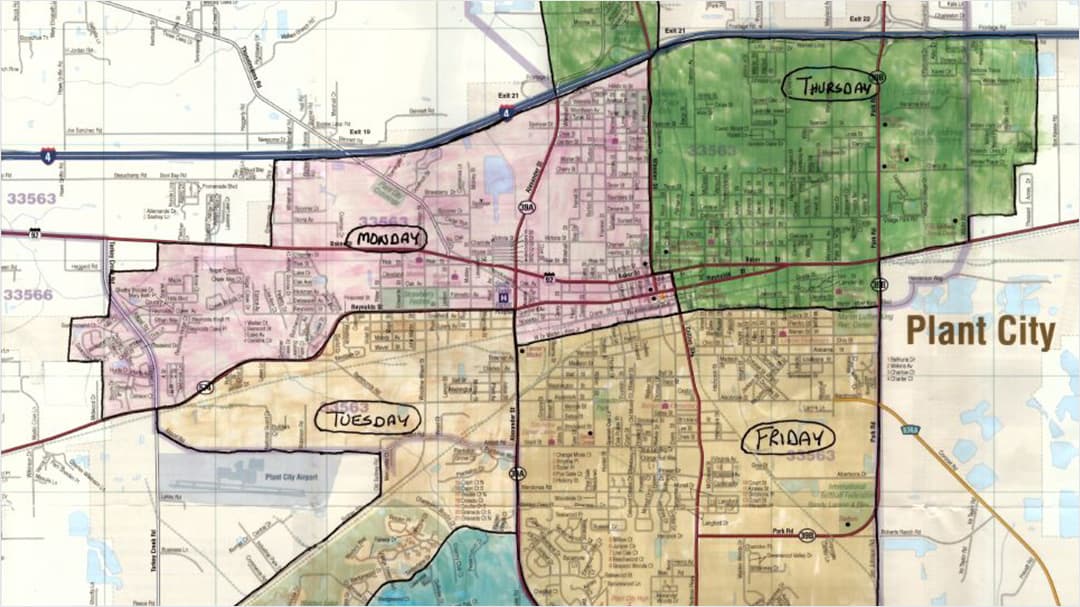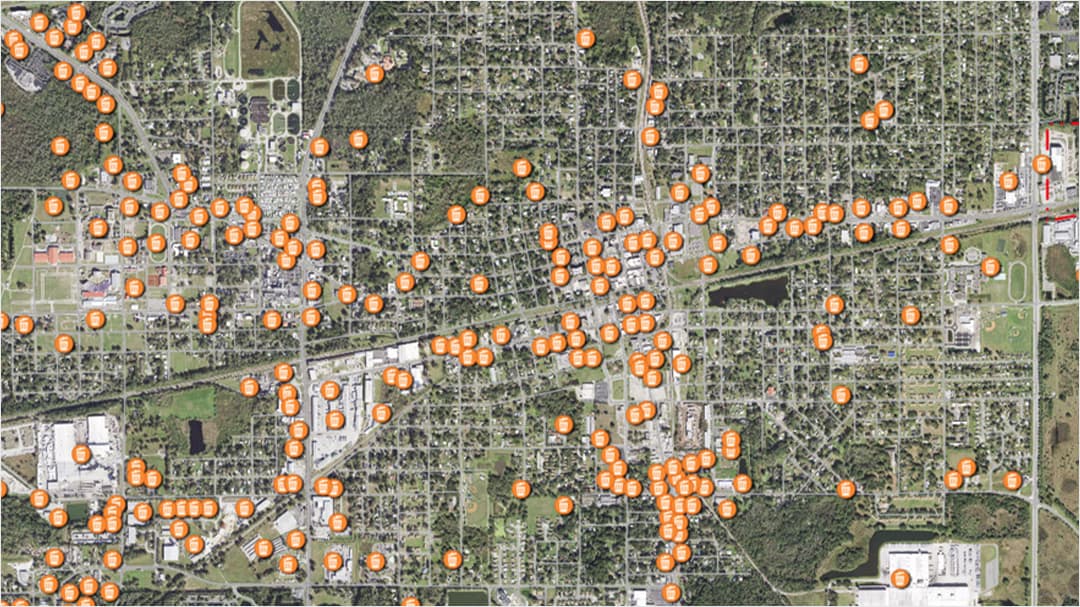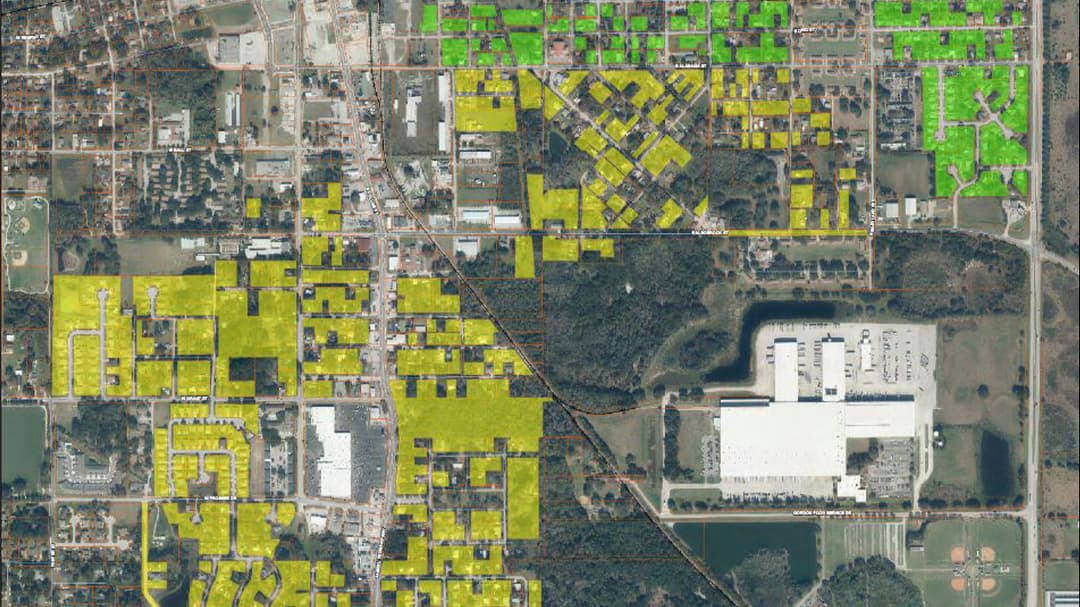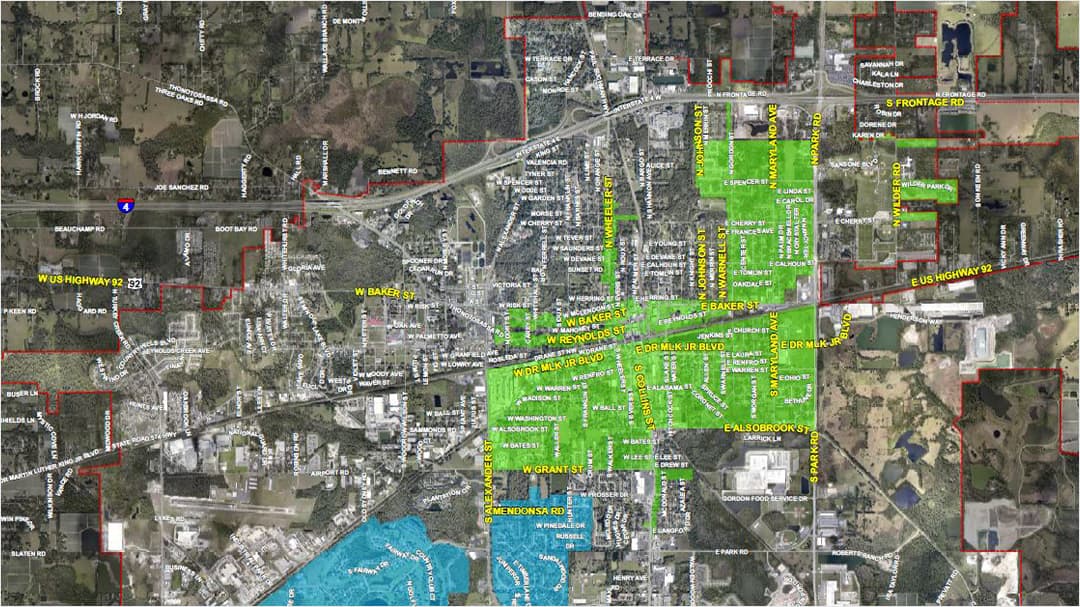case study
How Plant City, Florida, Is Keeping Up with Solid Waste Collection
How are small cities finding efficiency, cost savings, and a better way of collecting neighborhood solid waste to meet customer needs? For the City of Plant City, Florida, the answer is the automation with geographic information system (GIS) technology.
Plant City is growing. "We are building a 2,500-home subdivision, and we have projects under permitting for another 2,000 to 3,000 homes and 800 apartments. We are expecting the City to double its size in less than 20 years," said Zack Knezevic, the city's GIS coordinator. In this position for over a decade, Knezevic has witnessed the constant growth in the community.
Due to the expansion, manual methods of customer tracking and route management by utilizing spreadsheets had to be modified within the Solid Waste Department. Legacy data needed to be cleaned up and crew deployments optimized while anticipating future city growth. All of this was done to prepare for implementation of the new automated solid waste collection program. As with most small cities, this had to be done with utmost fiscal responsibility and with just staff on hand, especially due to the uncertainty of the pandemic. The Solid Waste Department staff turned to ArcGIS tools to clean up their data, collect data on solid waste carts, and ultimately help justify the purchase of more equipment and resources.
Facing Strategic Growth Challenges
City of Plant City is an incorporated suburban area with a population of 40,000 people on the eastern edge of Hillsborough County. The City's service area is over 28 square miles, and its competitively priced services are another incubator for growth. Surrounded by four exits of Interstate 4, the City provides conveniences for the local population commuting to Tampa and Lakeland within 30 minutes and to Orlando within an hour. While still growing in population, the City continues to annex land to keep up with the housing demand. The influx of warehouses and distribution centers along the adjacent county line has increased residential and commercial solid waste collection demands.
Faced with this challenge of keeping up the solid waste collection service level with limited employees and equipment, the City needed to prepare for long-range workloads at the same time. There was pressure on the Solid Waste Department to handle land under development plus land being annexed into the City.
Tackling Solid Waste Collection with GIS
The previous collection process was centered around paper maps. Drivers relied on muscle memory to go along their routes. There were issues with missing and wrong addresses and tracking of commercial dumpsters. One truck would pick up waste on one end of the City, and by that afternoon it would end up on the other side of town. The City needed to increase collection efficiency and save on fuel costs, so the savings could be passed on to residents.
 Staff used a legacy paper map to determine trash pickup days for each neighborhood.
Staff used a legacy paper map to determine trash pickup days for each neighborhood.
ArcGIS had become the best solution for in-house data cleanup projects like this. What became evident was that solid waste pickup was a spatial problem and needed to be resolved using a geographic approach. Solid Waste Department staff and Knezevic worked as a team to launch the first phase of the project to clarify roads and addresses, generate draft zone boundaries, geocode addresses from a spreadsheet into ArcGIS Desktop, and define final pickup zones. In that way, the software helped with optimizing pickup routes and generating automated collection maps. Due to recent jurisdictional boundary changes, which included transfer of pickup responsibilities from the county, hundreds of customers were identified that would have otherwise been missed without this project (170 just in one area).
"Esri's tools are user-friendly, and I was able to train staff that had not used the latest ArcGIS offerings to utilize them for data cleanup in 10 minutes, and [they] made mapping on the fly a breeze," said Knezevic.
Unlike residential addresses, commercial properties don't have their carts out front on trash pickup day. They can be in the middle of parking lots or behind buildings and warehouses, and they can be difficult to locate. It can frustrate drivers who are new to the route to find commercial carts since they have no previous knowledge about their locations.
 Commercial carts pick-up points.
Commercial carts pick-up points.
In addition to the customer information that was added into the city's database, city staff used ArcGIS Field Maps, a mobile data collection application, to collect spatial information for each commercial waste cart. With their mobile device, they can collect the location and condition, among other information about the carts, and that data is instantly populated in ArcGIS Online.
 Once address data was imported to ArcGIS, staff could more accurately pinpoint and filter through the customer addresses and see if they're missing a customer.
Once address data was imported to ArcGIS, staff could more accurately pinpoint and filter through the customer addresses and see if they're missing a customer.
With a complete database of both customers and commercial waste containers, staff now have a system in place to understand their solid waste demands and streamline drivers' day-to-day pickup routes. As future housing developments are built and more land is annexed into the city, the Solid Waste Department can build on top of the existing map and databases to prevent missing a customer's waste on trash pickup day.
 The final Automated Trash Collection map submitted to Plant City's City Commission.
The final Automated Trash Collection map submitted to Plant City's City Commission.
A Justification for Approving Fiscal Investment
This mapping project helped the team justify the purchase of additional waste disposal trucks for the long-range spread to the City Commission. The City is prepared for maintaining an adequate level of service in the future and was not going to wait until the number of residents escalated to twice as much to purchase additional trucks to cope with already increased demands.
"Thanks to the openness of the city and the Solid Waste Department's management to new technologies, visualizing the solid waste demand on a map made it more convincing to the City Commission of the problem we were dealing with," explained Knezevic.
While the primary investment will help the Plant City leaders further their goals, they also have a clear plan based on the strategic growth. The City is covering more area with less staff per population served, with minimal complaints.
The next phase is even more exciting. The City is planning to build a public-facing web app for residents to see pickup zones, receive information about recycling, monitor daily solid waste pickup status, and more.